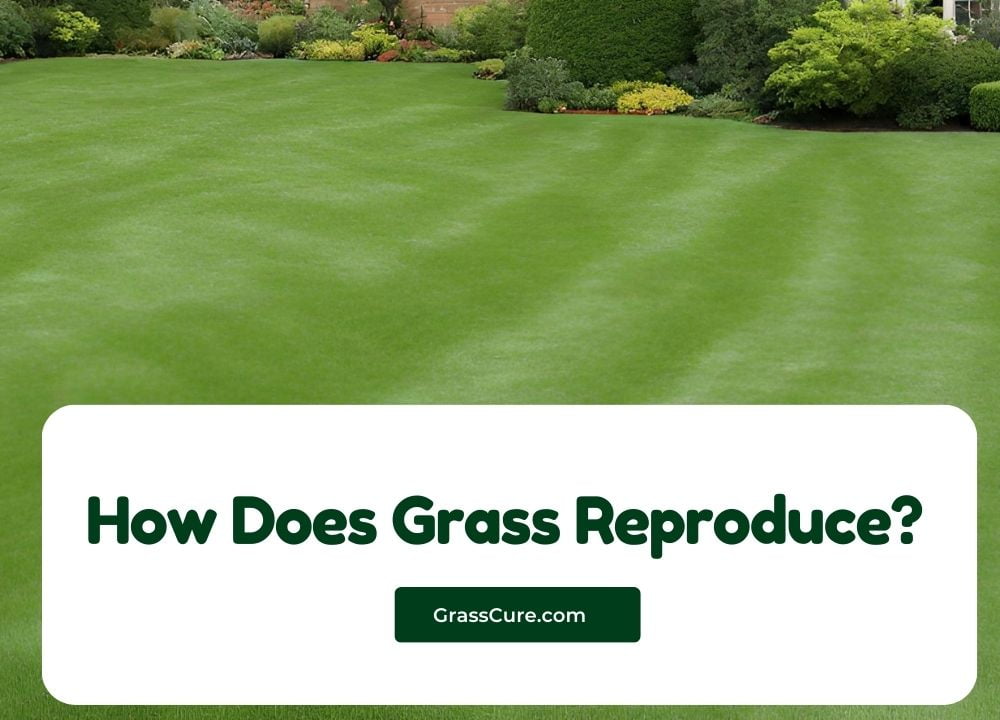Contents
- Introduction
- What is Starter Fertilizer?
- Why Use Starter Fertilizer for a New Lawn?
- How Much Starter Fertilizer Should You Use?
- Factors to Consider When Applying Starter Fertilizer
- Step-by-Step Guide to Applying Starter Fertilizer
- Signs You May Have Used Too Much or Too Little Fertilizer
- How Often Should You Fertilize a New Lawn?
Introduction
Establishing a new lawn requires careful attention, and using the right starter fertilizer plays a crucial role in its success. Starter fertilizer is designed to give young grass the nutrients it needs to develop strong roots and grow quickly, ensuring a thick, healthy lawn in the long run. Applying the correct amount is key—too little won’t support growth, while too much can harm the new grass. In this guide, we’ll explore how much starter fertilizer you should use to get your new lawn off to a great start.
What is Starter Fertilizer?
Starter fertilizer is a specially formulated blend of nutrients designed to help young grass seedlings establish quickly and grow strong. Unlike regular fertilizers, it contains a higher amount of phosphorus (the middle number in the N-P-K ratio), which is essential for root development. Typically, starter fertilizers have an N-P-K ratio like 20-27-5, where nitrogen (N) promotes green growth, phosphorus (P) supports root growth, and potassium (K) strengthens the grass’s overall health.
The primary role of starter fertilizer is to give new lawns the boost they need during their early stages, helping the grass grow dense and develop a deep root system. It’s ideal for use when seeding new lawns or laying sod, as it ensures the nutrients are available right from the start, leading to faster, healthier growth.
Why Use Starter Fertilizer for a New Lawn?
Starter fertilizer is essential for new lawns because it provides the key nutrients that young grass needs to establish quickly and develop strong roots. When you’re seeding or laying sod, the grass is in a vulnerable stage, and the soil may not naturally contain enough nutrients to support rapid growth.
The phosphorus in starter fertilizer is especially important, as it encourages root development, which is critical for the long-term health of the lawn. A strong root system allows grass to access water and nutrients more efficiently, leading to a thicker, greener lawn. Additionally, starter fertilizer helps new grass compete with weeds by promoting faster, more vigorous growth.
By applying starter fertilizer, you’re ensuring that your new lawn gets the best possible start, leading to quicker establishment, better resilience, and long-term success.
How Much Starter Fertilizer Should You Use?
The amount of starter fertilizer you should apply depends on your lawn’s size, grass type, and soil condition. Generally, a good rule of thumb is to apply 1 pound of nitrogen per 1,000 square feet of lawn. However, it’s crucial to follow the specific guidelines on the fertilizer bag, as different products may have varying nutrient concentrations.
For a new lawn, especially when planting seeds or laying sod, using the correct amount is key to avoiding issues. Over-fertilizing can lead to burned grass and nutrient runoff, while under-fertilizing may slow down the grass’s establishment.
To determine the right amount, start by testing your soil. Soil testing will reveal nutrient deficiencies, allowing you to adjust the fertilizer application accordingly. For most new lawns, using a balanced starter fertilizer with an N-P-K ratio like 20-27-5 is recommended, as it provides the necessary boost for root growth and early development. Properly measuring and spreading the fertilizer evenly across the lawn ensures optimal growth and avoids nutrient imbalances.
Factors to Consider When Applying Starter Fertilizer
When applying starter fertilizer to a new lawn, several factors can influence its effectiveness. Taking these into account will help ensure you get the best results:
1. Soil Testing
- Before applying fertilizer, it’s important to test your soil. A soil test will determine the existing nutrient levels and pH, allowing you to identify any deficiencies. This helps you choose the right fertilizer and avoid over-application, especially of phosphorus, which can build up in soil over time.
2. Grass Type
- Different types of grass have unique nutrient requirements. Cool-season grasses (like Kentucky bluegrass or fescue) and warm-season grasses (like Bermuda or zoysia) may require different amounts of fertilizer. Tailor your application based on the type of grass you’re planting to ensure optimal growth.
3. Lawn Size
- Accurately measuring your lawn’s square footage is crucial. The amount of fertilizer you apply should be proportional to the lawn’s size to avoid over- or under-fertilization. Use the manufacturer’s recommended rate per 1,000 square feet as a guide.
4. Time of Year
- The timing of fertilizer application can affect grass establishment. For cool-season grasses, early fall or spring is the best time to plant and fertilize, while warm-season grasses do better with fertilizer application in late spring to early summer. Applying starter fertilizer during these peak growing times will ensure the grass establishes more effectively.
5. Watering and Weather Conditions
- After applying starter fertilizer, watering is essential to activate the nutrients and help them reach the root zone. Be mindful of weather conditions, too—rain can wash away fertilizer if applied too heavily, while applying during a drought can stress the grass. Light, regular watering after fertilization is ideal.
Considering these factors ensures that your lawn gets the nutrients it needs without over-fertilizing or causing environmental harm.
Step-by-Step Guide to Applying Starter Fertilizer
Applying starter fertilizer correctly is essential to ensuring your new lawn thrives. Here’s a step-by-step guide to help you do it properly:
1. Prepare the Lawn Area
- Clear the area: Remove any debris, rocks, or weeds from the lawn area where you plan to plant seeds or lay sod. Ensure the soil is level and free of compaction.
- Loosen the soil: Use a rake or tiller to loosen the top 2-3 inches of soil, which will allow the fertilizer to penetrate and roots to grow more easily.
2. Test the Soil (Optional but Recommended)
- Why test?: Conducting a soil test helps determine the nutrient content and pH of your soil, allowing you to adjust your fertilizer choice accordingly.
- Action: If the test reveals nutrient deficiencies, you can adjust the amount or type of fertilizer you plan to use.
3. Choose the Right Fertilizer
- Select a fertilizer: Use a starter fertilizer specifically designed for new lawns. Look for an N-P-K ratio with a higher phosphorus content (e.g., 20-27-5) to support root development.
- Read the label: Follow the manufacturer’s instructions on the bag regarding the amount to use per square foot.
4. Calculate How Much Fertilizer You Need
- Measure your lawn: Calculate the total square footage of the area you’re fertilizing (length × width). Most starter fertilizers are applied at a rate of about 1 pound of nitrogen per 1,000 square feet.
- Adjust as needed: If the soil test indicates specific nutrient deficiencies, adjust the amount of fertilizer accordingly.
5. Apply the Fertilizer
- Use a broadcast or drop spreader: Set your fertilizer spreader to the recommended setting (listed on the fertilizer bag) to ensure even coverage. Spread the fertilizer evenly over the lawn, working in straight lines to avoid overlapping.
- Ensure even application: Overlapping too much or missing spots can cause uneven growth. You may want to apply half the fertilizer in one direction (north-south) and the other half in the opposite direction (east-west).
6. Plant Grass Seed or Lay Sod
- Apply seed: If you’re seeding, do so immediately after fertilizing. Spread grass seed evenly using a seed spreader or by hand.
- Lay sod: If you’re installing sod, lay it out directly after applying the starter fertilizer. Make sure the sod pieces fit tightly together without gaps.
7. Water the Lawn
- Light watering: After applying fertilizer and seed or sod, water the lawn lightly to help the fertilizer dissolve and begin working. Ensure the soil is moist but not soggy.
- Daily watering: Continue watering daily for the first two weeks, keeping the soil moist but not saturated to encourage seed germination or sod rooting.
8. Monitor Lawn Growth
- Watch for growth: In the coming weeks, monitor the grass’s growth. It should begin sprouting in 7-10 days if you’re seeding, or sod should start rooting within that time.
- Avoid heavy traffic: Keep off the lawn as much as possible during this early growth phase to allow the grass to establish.
9. Follow-Up Fertilization
- After 6-8 weeks: Once the grass has been established, you can begin applying regular lawn fertilizer to maintain healthy growth and support further development.
By following these steps, you’ll give your new lawn the best possible chance to grow strong and healthy, ensuring lush, green grass that will last.
Signs You May Have Used Too Much or Too Little Fertilizer
Applying the correct amount of fertilizer is crucial for the health of your new lawn. Over- or under-fertilizing can lead to various problems that affect growth and appearance. Here’s how to recognize if you’ve used too much or too little fertilizer:
Signs of Over-Fertilizing
- Burned Grass (Fertilizer Burn)
- Symptoms: Yellow, brown, or scorched patches on the lawn.
- Cause: Excess nitrogen in the fertilizer causes the grass blades to dehydrate, resulting in burnt or dead areas.
- Excessive Thatch Build-Up
- Symptoms: A thick layer of dead organic matter between the grass blades and the soil.
- Cause: Over-fertilization leads to rapid growth, creating more thatch than the lawn can break down naturally.
- Rapid, Uncontrolled Growth
- Symptoms: Grass grows too quickly, requiring frequent mowing.
- Cause: Too much nitrogen can cause excessive top growth at the expense of root development, leading to a weak lawn.
- Increased Weed and Pest Activity
- Symptoms: A sudden increase in weeds or pests.
- Cause: Over-fertilized lawns create an ideal environment for weeds and pests to thrive, especially if growth is uneven.
- Nutrient Runoff
- Symptoms: Fertilizer washing away from the lawn, sometimes noticeable as discoloration in nearby water bodies.
- Cause: Over-application leads to nutrient runoff, polluting the surrounding environment and wasting fertilizer.
Signs of Under-Fertilizing
- Slow or Stunted Growth
- Symptoms: Grass grows slowly or appears thin and patchy.
- Cause: Insufficient nutrients, especially nitrogen, limit the lawn’s growth and development.
- Pale or Yellowing Grass
- Symptoms: Grass takes on a pale green or yellowish color instead of a deep, healthy green.
- Cause: A lack of nitrogen and other essential nutrients prevents proper chlorophyll production, leading to discoloration.
- Weak Root System
- Symptoms: Grass is easily pulled up, or sod fails to root properly.
- Cause: Without enough phosphorus, the grass cannot develop strong roots, leaving it vulnerable to stress and poor growth.
- Poor Resistance to Stress
- Symptoms: Grass struggles during heat, drought, or heavy traffic, wilting easily or dying back.
- Cause: Under-fertilized lawns lack the nutrients needed to withstand environmental stresses.
- Increased Disease Susceptibility
- Symptoms: Grass is more prone to fungal diseases and other lawn problems.
- Cause: Nutrient-deficient lawns are weaker, making them more susceptible to disease and damage.
What to Do if You Notice These Signs
- For Over-Fertilization: Water the lawn deeply to help flush excess nutrients out of the soil. Avoid further fertilization until the lawn recovers.
- For Under-Fertilization: Apply a balanced fertilizer at the recommended rate to provide the nutrients the lawn needs. Be careful not to overcompensate by adding too much fertilizer at once.
By recognizing these signs early, you can adjust your fertilization practices and restore your lawn’s health before more serious damage occurs.
How Often Should You Fertilize a New Lawn?
Fertilizing a new lawn is crucial for establishing healthy grass, but timing and frequency play a key role in ensuring its success. Here’s how often you should fertilize your new lawn:
1. Initial Application (Starter Fertilizer)
- When to apply: Apply starter fertilizer immediately after seeding or laying sod. This one-time application delivers the essential nutrients needed for quick root development and initial growth.
- Why: The high phosphorus content in starter fertilizer promotes strong root establishment, which is vital in the early stages.
2. First Follow-Up (4-6 Weeks After Seeding or Laying Sod)
- When to apply: Approximately 4-6 weeks after the initial fertilization, apply a balanced lawn fertilizer.
- Why: By this time, the grass will have started to germinate or root, and applying more nutrients helps support ongoing growth and ensures the grass becomes thicker and more resilient.
3. Seasonal Maintenance Fertilization
- Cool-season grasses:
- Fall: Apply fertilizer in early fall to support root development and prepare the grass for winter dormancy.
- Spring: Apply a slow-release fertilizer in early spring to give the grass a boost as it comes out of dormancy.
- Warm-season grasses:
- Late Spring to Early Summer: Fertilize in late spring when warm-season grass begins to grow actively. Continue with another application in mid-summer to maintain healthy growth during the growing season.
4. Avoid Over-Fertilizing
- Why it matters: While regular fertilization is important, over-fertilizing can harm your new lawn by causing nutrient imbalances or even burning the grass.
- Action: Stick to a balanced fertilizing schedule and avoid reapplying until necessary. Always follow the product instructions for the proper amount and frequency of application.
5. Long-Term Fertilization Plan
- After establishment: Once the new lawn is fully established (after 6-12 months), you can switch to a standard fertilization schedule. For most lawns, this involves fertilizing 2-4 times a year, depending on grass type, climate, and soil conditions.
By following this fertilization schedule, you’ll provide your new lawn with the nutrients it needs to grow healthy and strong without the risk of over-application.
Conclusion
Using starter fertilizer effectively is essential for establishing a vibrant, healthy lawn. By understanding the importance of starter fertilizer, knowing how much to apply, and considering various factors such as soil conditions, grass type, and timing, you can set your new lawn up for success.
Regular monitoring of your lawn’s health will help you adjust your fertilization practices as needed, ensuring that your grass receives the nutrients required for optimal growth. Remember to apply starter fertilizer during the initial stages, follow up with additional fertilization, and maintain a consistent care routine.
With the right approach, you’ll cultivate a lush, green lawn that thrives for years to come, enhancing the beauty of your outdoor space. Happy gardening!






